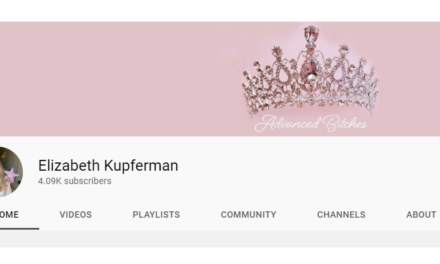
JULY 12, 2024
5 things to do
How To Add a New Revenue Stream
Expert creators know adding more revenue streams can make a content business more prosperous. Yet, it can be hard to discern which ones to profit from outside the standard list of ads, sponsorships, and merch.
Jen Matichuk, strategic partnerships manager at Memberful, says paid membership programs can work well for content entrepreneurs. At CEX, she shared these five things to do to grow a membership program. Her advice also works well for most content business offerings.
1. Ask these questions: Jen recommends you answer these three questions: What can you offer? Why should you offer it? How should you offer it?
Think of one thing you can provide to your audience. Make it the center of your membership program. Equally important is to ask why it benefits your audience. If what you plan to offer doesn’t really benefit your audience, it’s time to rethink it so you provide real value.
Finally, pay close attention to how you offer the value. It’s not enough to know that, for example, you can add a membership program that offers cheap recipes and your audience will benefit because they can have more variety in their meals at a low cost. That would be pointless if you opt to offer the program on Discord, and your audience can’t access the recipes because they aren’t familiar with it and get frustrated by the channel. Pick the platform/format that works for both you and your audience.
2. Communicate with your audience: This may sound basic, but do it early and do it often. Your audience has needs, and the more your business meets those needs, the more it thrives. Before launching a new offering, ask your audience if they’re ready for those services. Are they excited about what you hope to offer? Along the way, stay in close touch with them to gauge their interest. Maybe they don’t want a particular service, and you can stop spending time on it. Maybe your audience isn’t interested in a certain price range. That’s OK. Close communication with your audience will help you better spend your time in ways that create the most value for your audience and the business.
3. Jump in and start small: Jen says she would have told her earlier self to stop worrying about creating a plethora of membership options and delaying a launch until everything is just right. Your audience doesn’t need a lot of membership options; they need a few valuable ones.
In some cases, providing (and promoting) too many services can create confusion as to exactly what the audience can expect and may spread you too thin to actually deliver. It’s better to offer what you know you can do and build from there. Jen quotes creator Tom Whalin, “Anything’s better than not starting at all.”
4. Add revenue streams you control: Creators can no longer rely on their audience on traditional social platforms. Algorithms change, companies get bought out, and business models are designed to serve advertisers rather than creators. Content businesses operate better when you earn revenue from streams you can control.
Membership programs, books, consultations, subscriptions, etc., all fit into the owned model. And remember, a membership program using YouTube’s built-in system is just as subject to YouTube’s whims as an advertising deal.
5. Build a community: Audiences are valuable. Communities are even better. Community members feel they are part of your journey and invested in your success. Audience members will pay attention to what you share. Community members will share what you create. They can be your promotional “street team.”
Jen explains how Molly Baz’s cooking membership program fosters community. Members pay $55 a year to belong to The Club. They find recipes on her site, where they also engage with her and each other in the comment section. Those members then post all over social media the results of their attempts at making a dish, which generates attention for Molly and her latest recipes.
As Jen says, “A tight community leads to long-lasting trust, and trust leads to success in future ventures.”
-Leo Bonnacci
tilt publishing book club
Michael Becker is a growth advisor/consultant at Conscious Creatorship. In June, he published Content Capitalist: How to Create a Content Business So Exclusive Customers Beg to Buy with Tilt Publishing.
Why this book?
The book is an ode to the last 10 years of my career in marketing. It melds insights and takeaways from my work as a microinfluencer/creator, corporate marketer, and coach/consultant.
Who is the audience?
Branded experts (consultants, coaches, service providers, agency owners, microinfluencers, creators), startups, scale-ups, enterprise marketers
When did you have the idea for this book?
I’ve always wanted to be an author, but the concept for this book crystallized in my mind just over a year ago. I interviewed Joshua Lisec on my podcast and bought his book, So Good They Call You Fake, the same day.
Your creation process?
I began with an outline but rewrote the book a dozen times; the final product is entirely different from what my editor saw and reviewed.
When I first began, I wrote all the chapters and section highlights in a notebook. Some chapters ended up getting scrapped and used as bonus chapters. But to get to the nearly 100K-word version you see today, I simply devoted many hours to compiling, rearranging, and editing. This is all I worked on for the past year.
Primary business goal?
Sell 1,000 copies during the lifetime of the book.
Unexpected challenge?
The book ended up being longer than I thought. I Googled the average length for non-fiction business books and saw anywhere from 50K to 80K words. I thought, “OK, cool, I can do that.” My initial version that went to my editor was around 75K words.
But I realized it needed more meat if I wanted it to truly be my authority book. So, I included snippets from past podcast guests as case studies, created over 100 illustrations, and covered more topics than I thought I would. The challenge was trying to condense everything into as few words as possible. I’m not sure I did such a good job at that because the book feels more like a reference guide.
Marketing?
A mix of earned and owned media with a bit of paid promotion (boosting posts). I did a half-dozen podcast interviews and post across social media weekly.
Tips for authors in progress?
Put your time in the lab. Even when I didn’t feel like writing, I knew that if I sat in front of my computer and started working, I would be “good.” So, for me, it was just a matter of getting started. Make it about the daily action of working on the manuscript, even for 10 minutes, if that’s all you have.
Accept that this will take a year. When I started, I thought, “If I work X hours per day, and I can write X chapters in one week, then I’ll finish the book in two months.” That’s not how it works. Once you get going, you will revise it multiple times and want it to be the best thing you’ve ever done. This takes time. You must be OK with delayed gratification.
Know you can do it. A lot of people don’t have confidence in themselves to write a book or don’t know what to write about. I think anyone can do this. Everyone is a subject matter expert in something. You just have to find your “zone of genius” and think about how a book could complement your personal brand or business strategy. I would not recommend using a ghostwriter. It has to come from you.
5 things from the tilt
- Bring your questions, or just listen in to Tilt Your Business. The podcast hosted by Michelle and Ann starts at 12 p.m. US EDT every Tuesday.
- As content entrepreneurs (and human beings) we need to take “supposed to” out of our vocabulary. (Content Inc.)
- Joe and Robert discuss if there may be cracks in the Influencer content game. (This Old Marketing)
- Matt and Lauren share ideas for repurposing your existing content. (Publish & Prosper)
- ICYMI: Fretboard Journal Shows Why Print Magazines Can Be the Featured Hit for Content Brands
5 things to know
Money
-
’Letter boost: LinkedIn now allows owners of company pages to pay to boost their newsletter articles. The feature will be available to member-authored newsletter articles in the future. [Social Media Today]
Tilt Take: Helpful option to market your newsletter to potential subscribers.
Audiences
-
Oldies not good: YouTube considers subscribers’ tenure when surfacing your channel’s content on their home page. Long-time subscribers will generate weaker signals because YouTube isn’t sure they’re still interested in the content. [YouTube Liaison]
Tilt Take: You, not YouTube, must do the work to get your content in front of your oldest, and sometimes biggest, fans. -
Stick it: “Add Yours” stickers are being tested by some YouTube Shorts creators. Viewers can click the sticker and create a response video. [Search Engine Journal]
Tilt Take: Audience engagement is invaluable for both growing bonds with your subscribers and getting feedback on your content.
Tech and Tools
-
Well versed: The newsletter platform Ghost joined the fediverse, the open social network of interconnected servers with apps like Mastodon, Flipboard, and Threads. Subscribers to Ghost newsletters can now track them through RSS and ActivityPub-powered apps in addition to the more traditional email and website channels. [Tech Crunch]
Tilt Take: Expanding your delivery channels while retaining your subscribers’ direct contact information is a win-win.
And Finally
-
Creator alliance: NATO and the US Defense and State departments invited two dozen creators to attend the NATO Summit this week. They realize the value of reaching the younger generation who don’t follow traditional media. [The Washington Post]
Tilt Take: Another sign that content creators are today’s media.
Get more of the Full Tilt stories on TheTilt.com.
Know a content creator who’s going full tilt? DM us or email [email protected].
Want to advertise on The Tilt? Go here.
Or email us at [email protected].
Was this email forwarded to you? Get your own sub here.
Copyright ©2024 Lulu Press, Inc. All rights reserved.
Update your preferences | Unsubscribe | 700 Park Offices Dr., Suite 250, Durham, NC 27709





